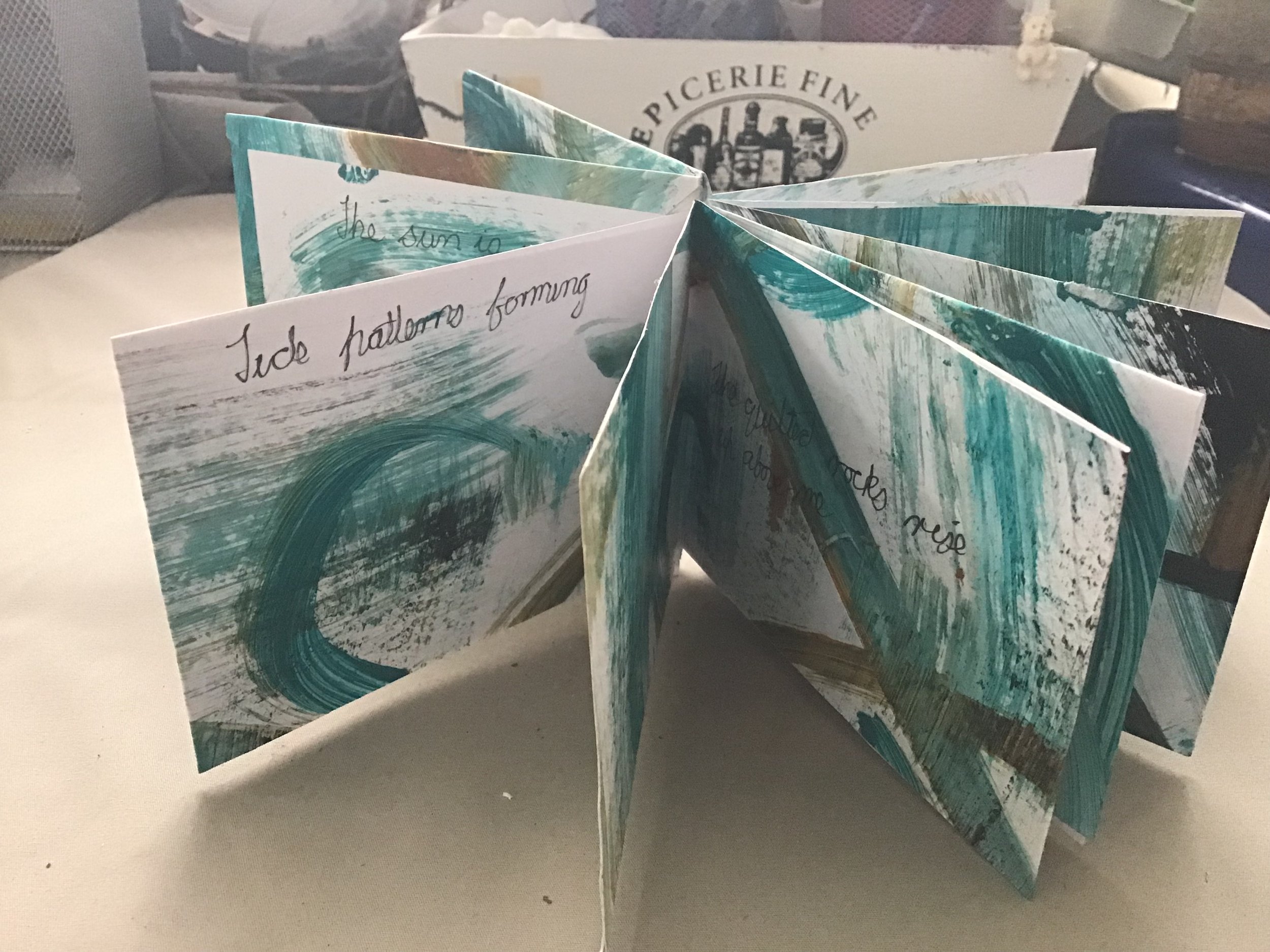A Beach Walk Findings
This week has been an emotional one for me. My husband contracted bacterial pneumonia and the infection got into his blood stream and travelled to the site of his titanium hip replacement. At present he is in hospital unable to walk or put pressure on his right side. They are on top of the pneumonia now but he will need to have surgery to scrape the infection away from the hip joint replacement, He is waiting to go to surgery as I type this. I have just heard he will have a replacement ceramic hip put in and will need to stay in hospital for two weeks to make sure the infection does not reappear. Once he is clear of infection there will be about a 6 month recovery process. I have been traveling back and forward to the hospital each day and feeling exhausted by the time I get home so not much happening in the studio at the moment so I am posting this piece which was completed a couple of weeks back.
This piece was recently completed from Debbie Lyddon’s on line course with fibre Arts Take 2. When i look at it now it has an almost Maori weaving look to it but that has been accidental. The drawn threads and wavy edges were to represent the tidal movements. . The base of the ostrich foot foot (struthiolar populosa) hand freely in little windows made from copper wire covered eyelets. These shellfish are only found in the cooler waters of the Southern hemisphere. On the West coast beaches where the Tasman Sea presnts and ongoing onslaught the shells can be found in various stages of decomposition. The strongest part of the shell is the base. It is symbolic of the need for a strong base iall we do.
There are 10 windows with the “bases” hanging freely. the number ten in Pythagorean theory is the symbol of perfection and colpetion. we have 10 fingers and toes. Ten symbolises the completion of a cycle. These findings are the completion of the life cycle of the Ostrich Foot organism - the last identifiable portion before the waves pound them to indeginite fragments.
I have chosed the colours for this piece very intentionally. The dark to represent the West Coast iron sands and the light to replicate the shattered shell substrates. I have left the edged unfinished as a symbol of diintegration
At the bottom left, behind the pulled threads is a print on foil of a skyshap - barely revealed. This incorporates the idea of sand, sea and sky - the elements earth, water and air
So That is How Caterpillar Books are Supposed to Work
I have made caterpillar books/snake books before but I was never quite sure how they were supposed to work. Mainly because the last very important step had been missed from the instructions and that is gluing the internal pages together so the book stands as a book and no longer wants to unfold in a complicated manner.
In Debbie Lyton’s Sensing Place course (Fibre Arts Take 2) we were encouraged to take a walk and create small sketches of a considered moment on that walk. I think we were supposed to sit and do this but I decided to incorporate the exercise with a walk to the Three Sisters Rocks at Tonagaporutu. I had long wanted to do tis walk but they are only accessible when the tide is out (half way or more) and my husband isn’t up to walking that distance since his lung cancer operation.
I was to collect some delicate ceramics from a home based potter in new Plymouth and I planned my return trip so that I would catch the tide just right. For any artist the trip is a delight of huge monolithic structures, textures, caves and the ever present sea
You can join me on my walk on the slide show below.
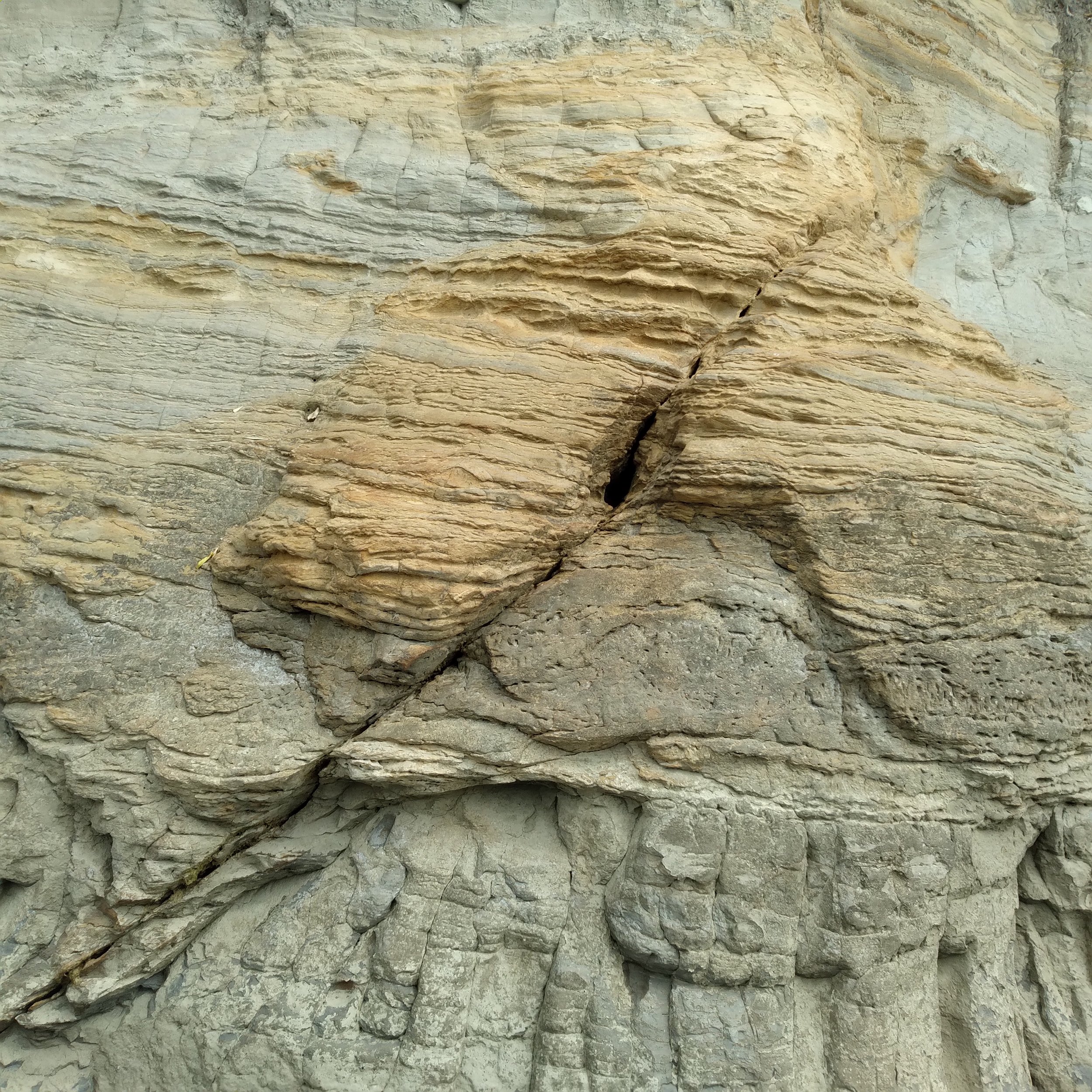
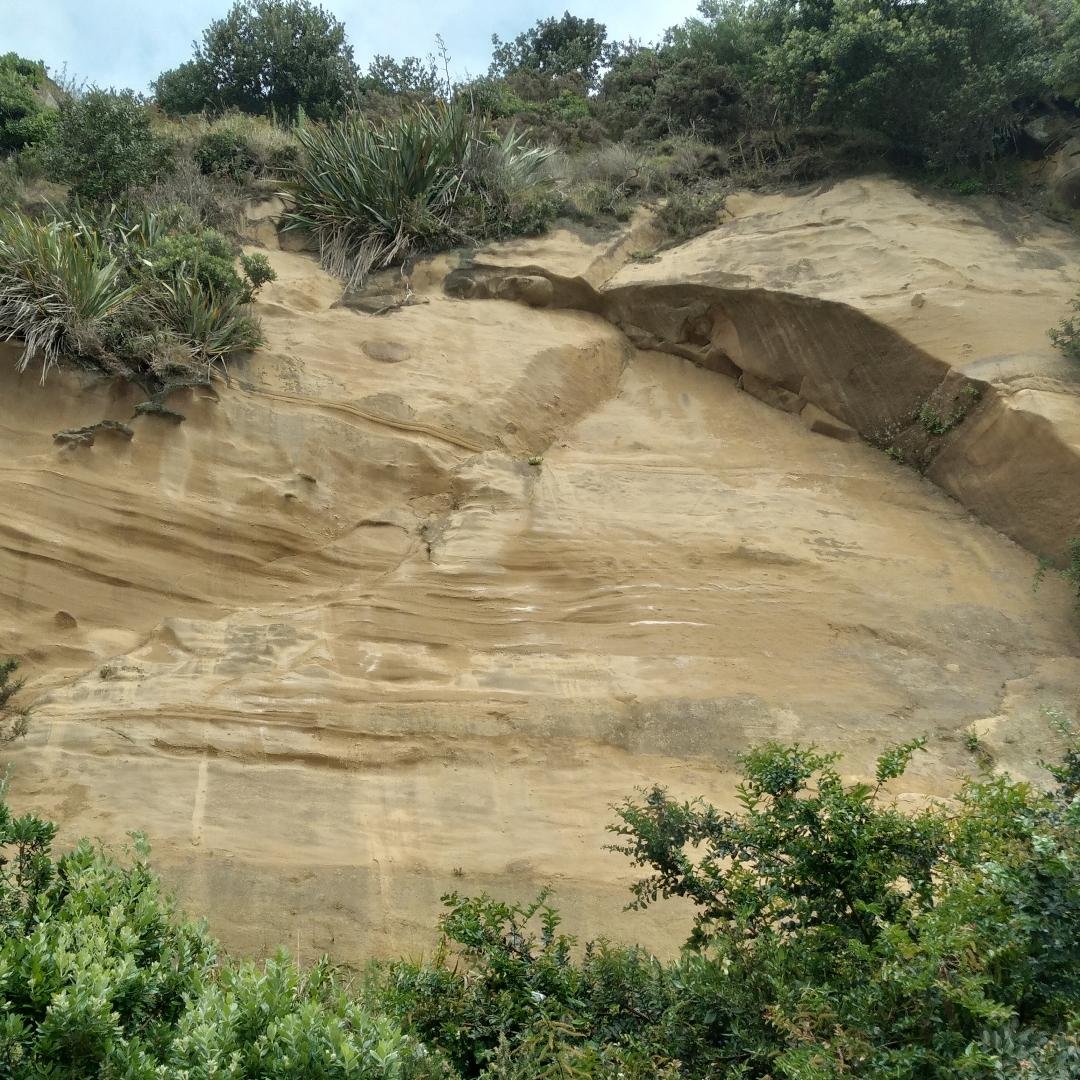

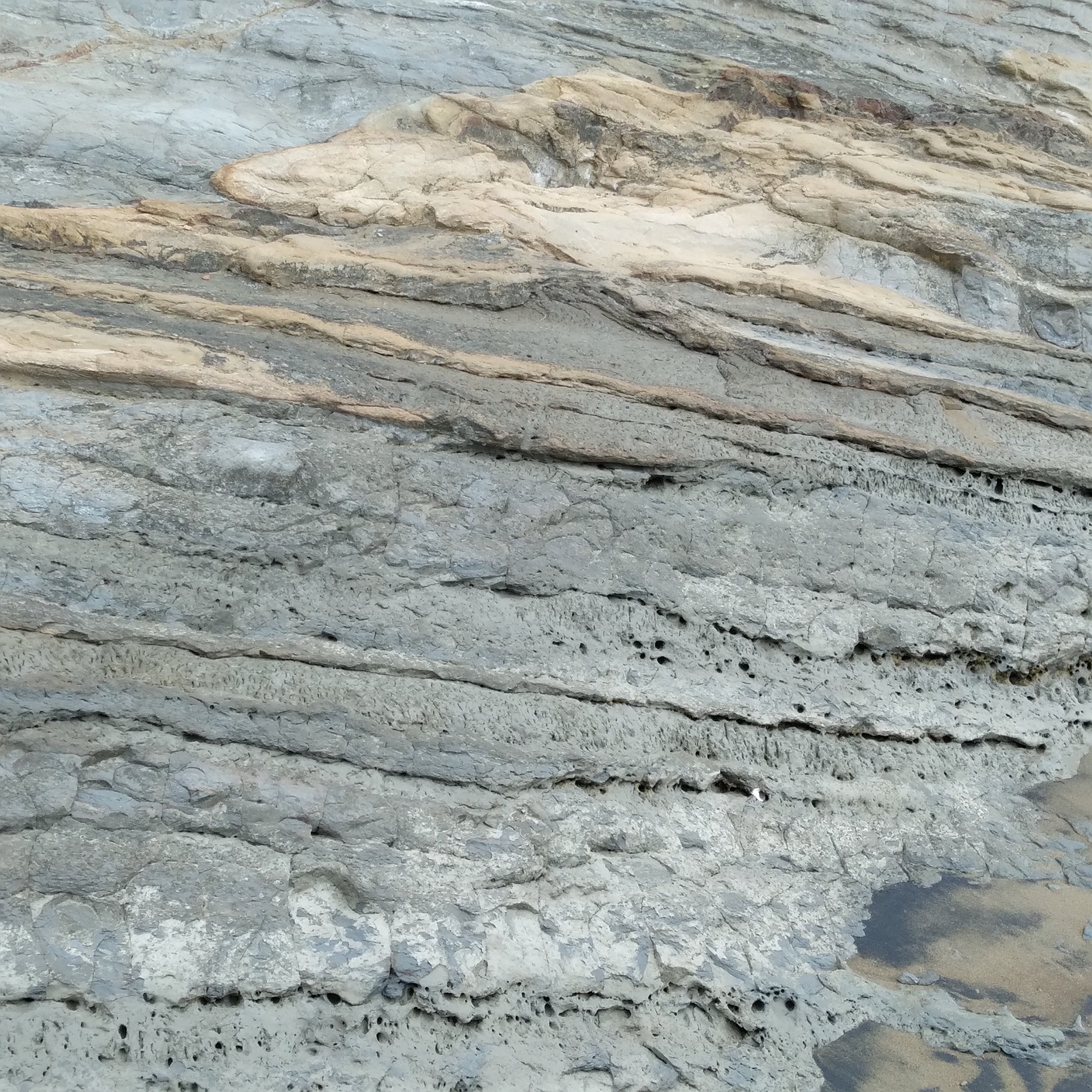

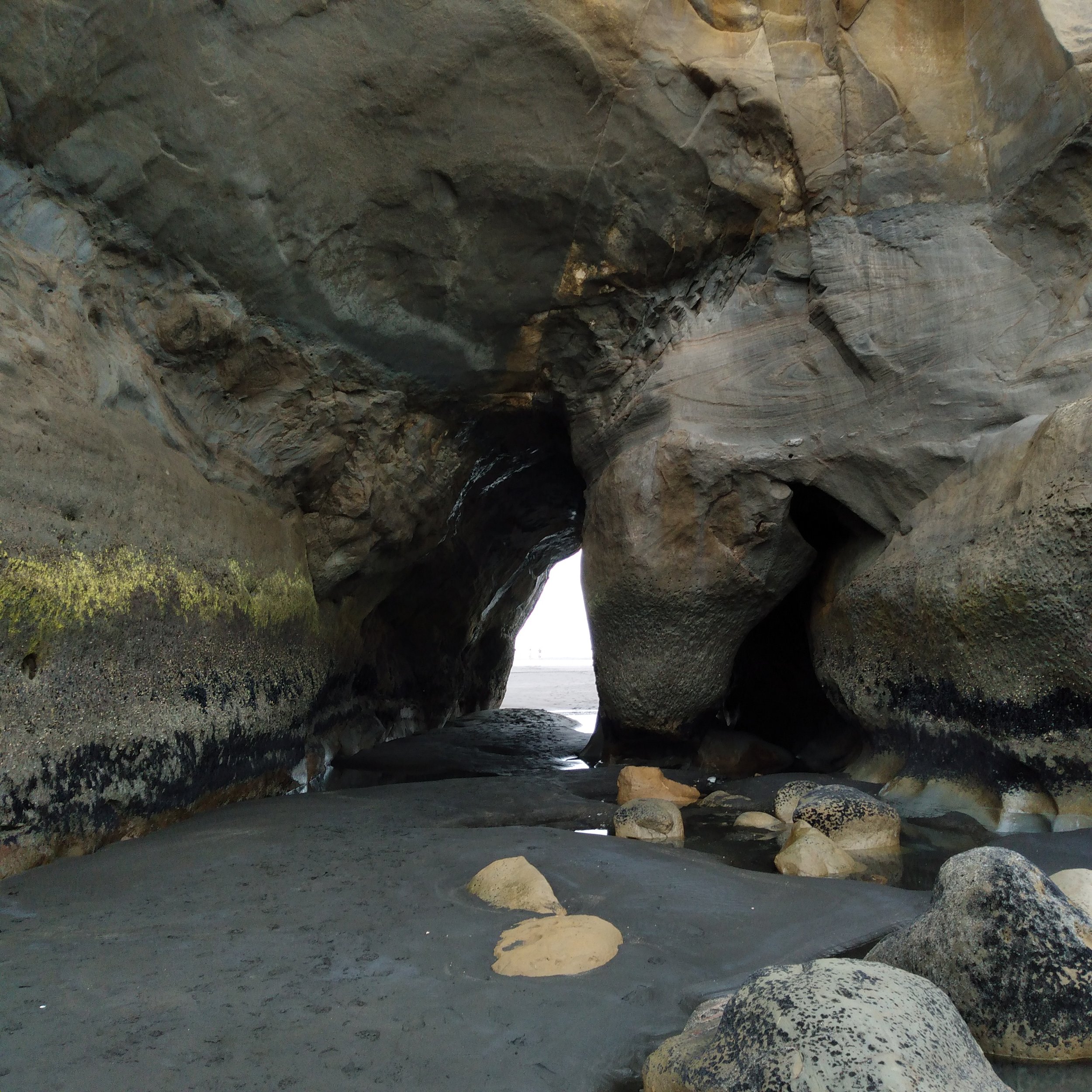
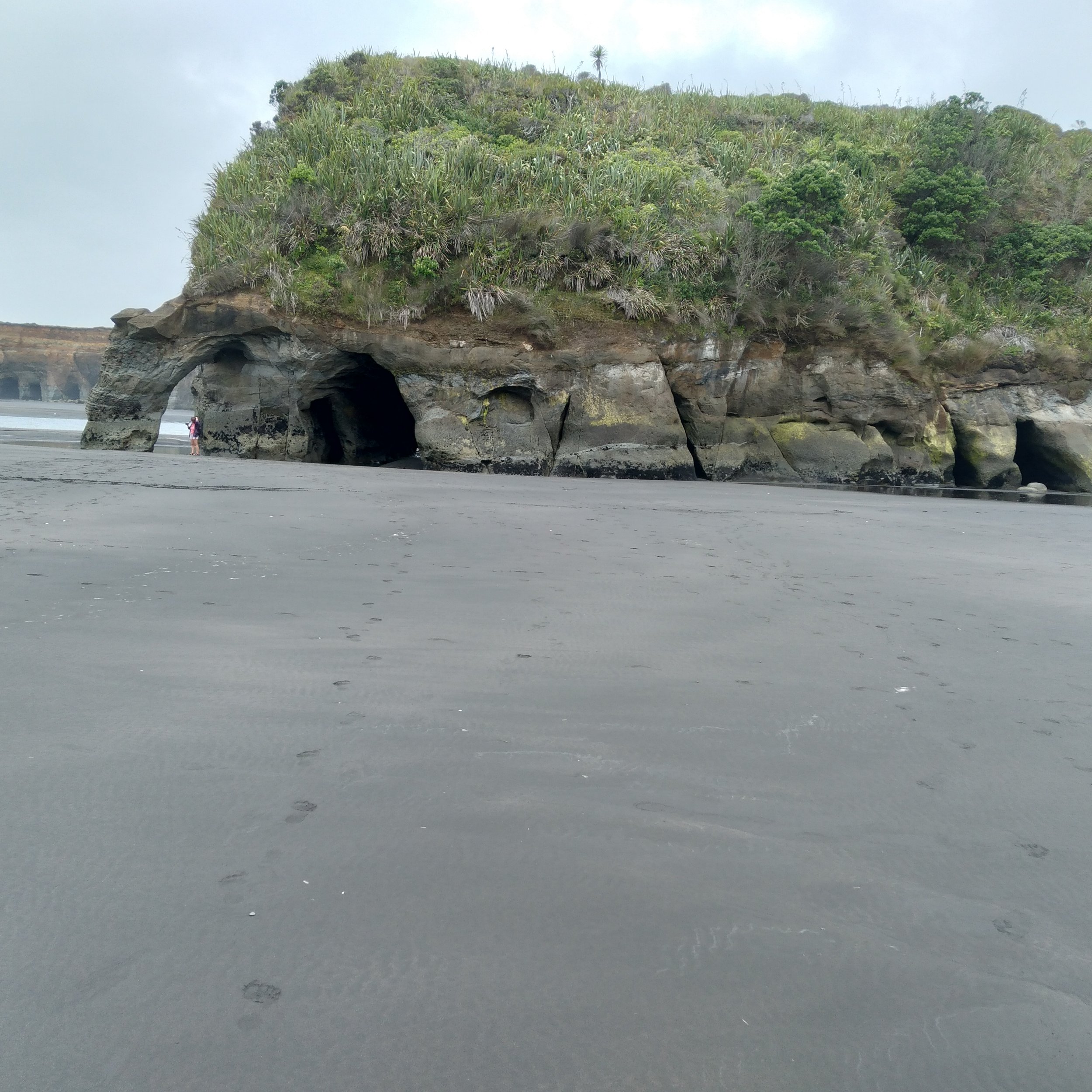
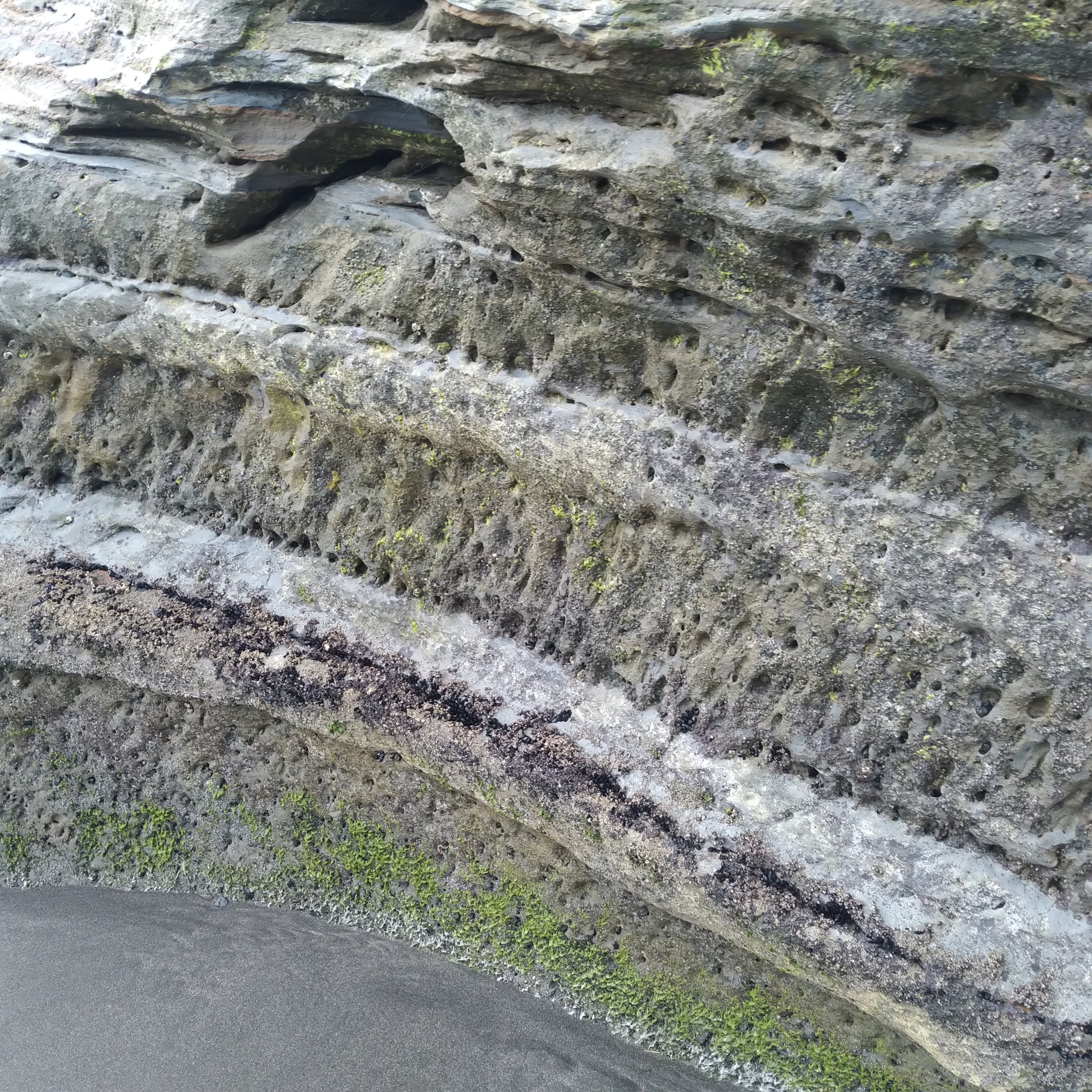
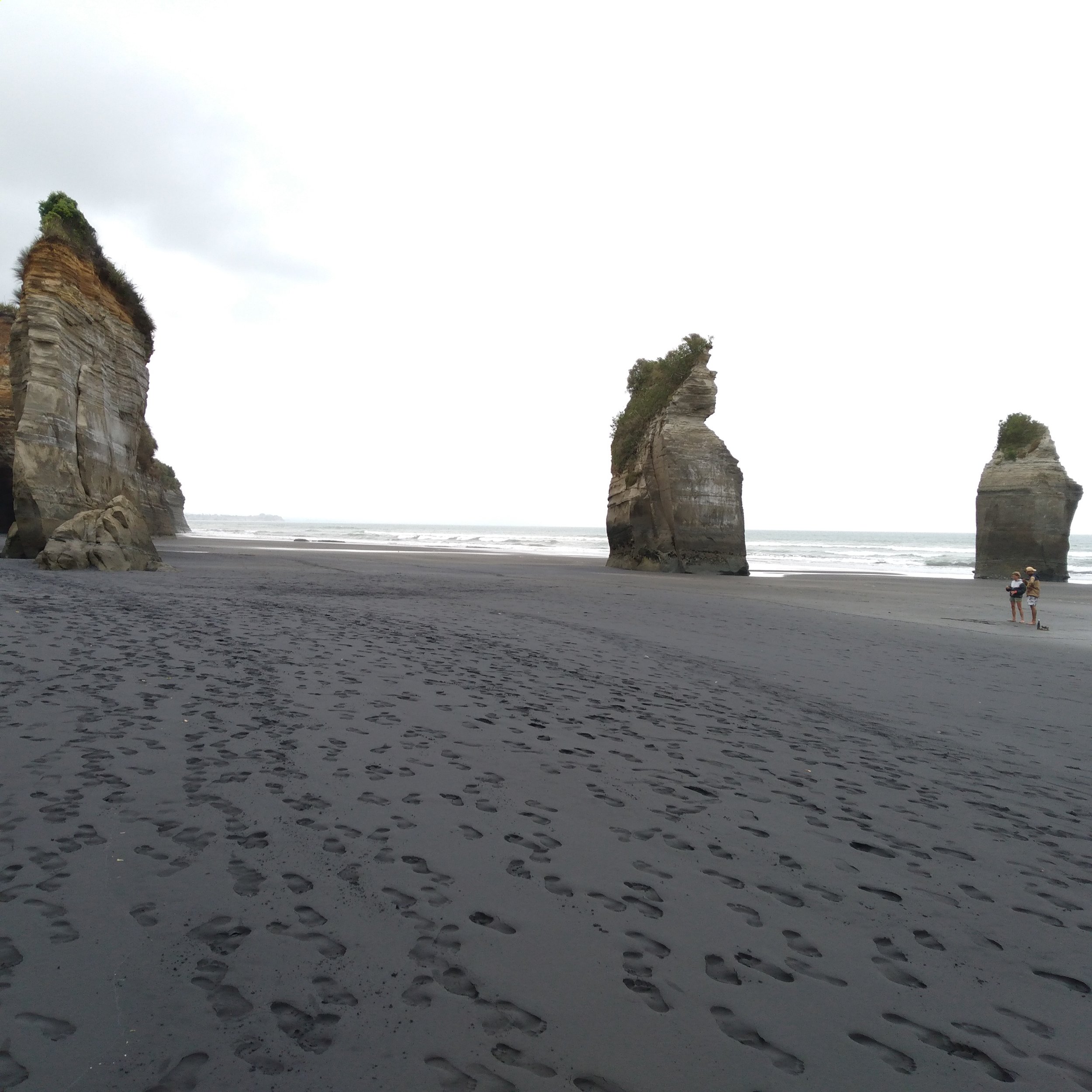
We were encouraged to use descriptive text to insert into our caterpillar book.
Here is my text:
The sun is warm on my face
The half tide sea, cool on my feet
Tide patterns forming against the strata rockface
I hear the drips of water cascading
The quilted rocks rise up above me
Sea worn caves of dark secrets
Tunnelling through to peep hole visions
Water flowing, tide ebbing
Glimpses of coastline through the openings
The Tasman sea forever lurking
Sentinels standing - Three Sisters
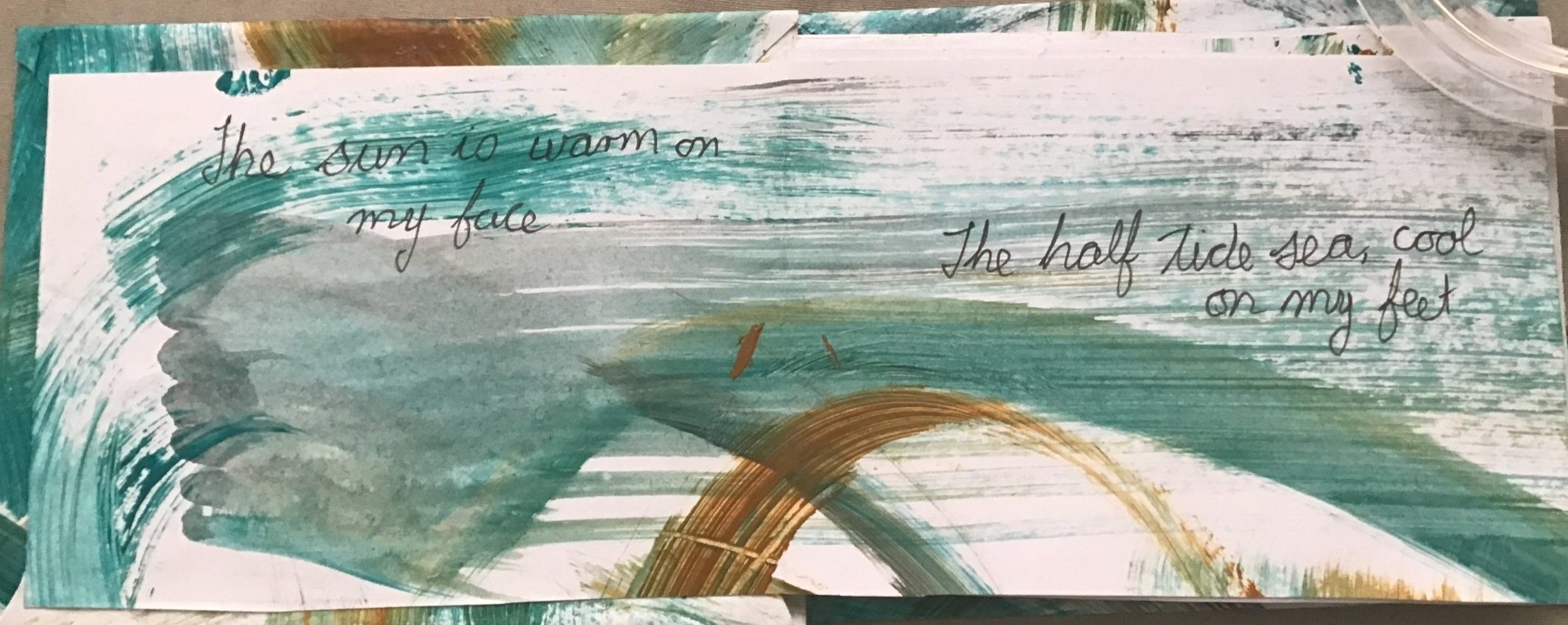
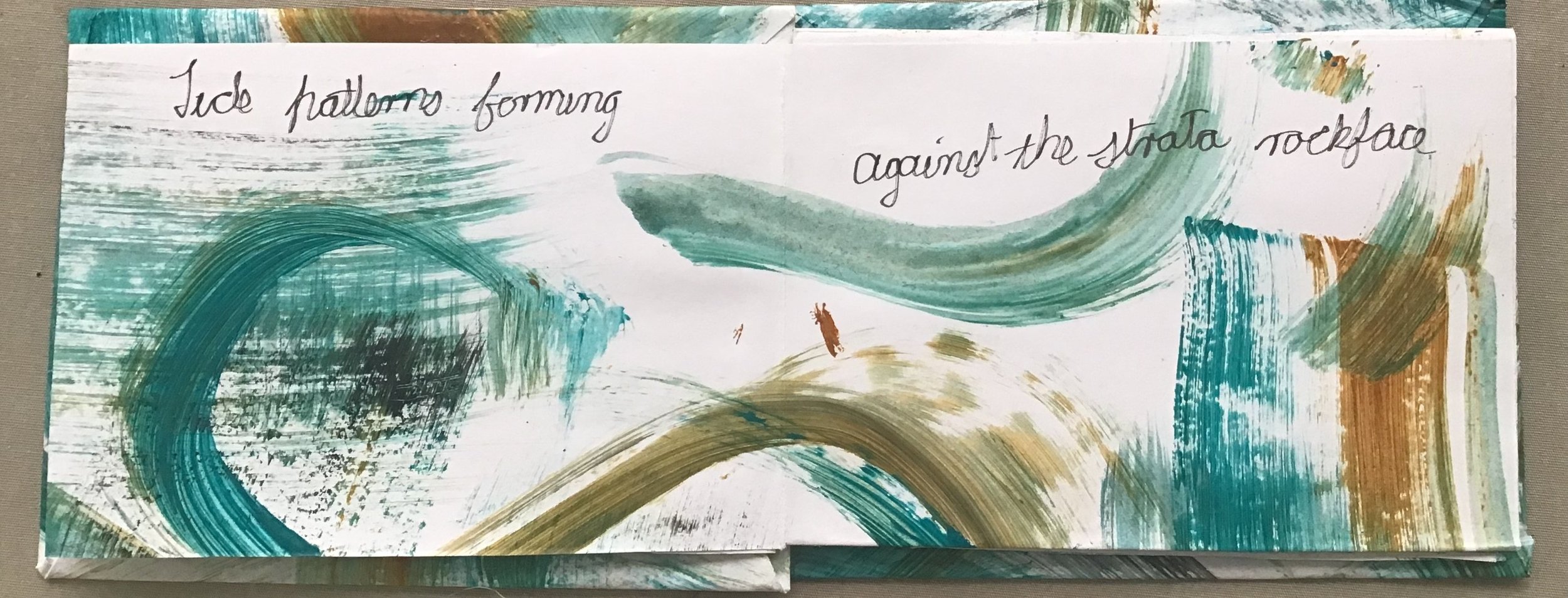
![IMG_8680[1].JPG](https://images.squarespace-cdn.com/content/v1/639f6bda61e0456d11776132/1709526148443-ZULEWDGBFFJOXZJD030C/IMG_8680%5B1%5D.JPG)
![IMG_8681[1].JPG](https://images.squarespace-cdn.com/content/v1/639f6bda61e0456d11776132/1709526224734-IQCCUC9BJ2Z23QZYGZ6U/IMG_8681%5B1%5D.JPG)
![IMG_8682[1].JPG](https://images.squarespace-cdn.com/content/v1/639f6bda61e0456d11776132/1709526276489-1F0MUZGKRAMRML6C8AYM/IMG_8682%5B1%5D.JPG)
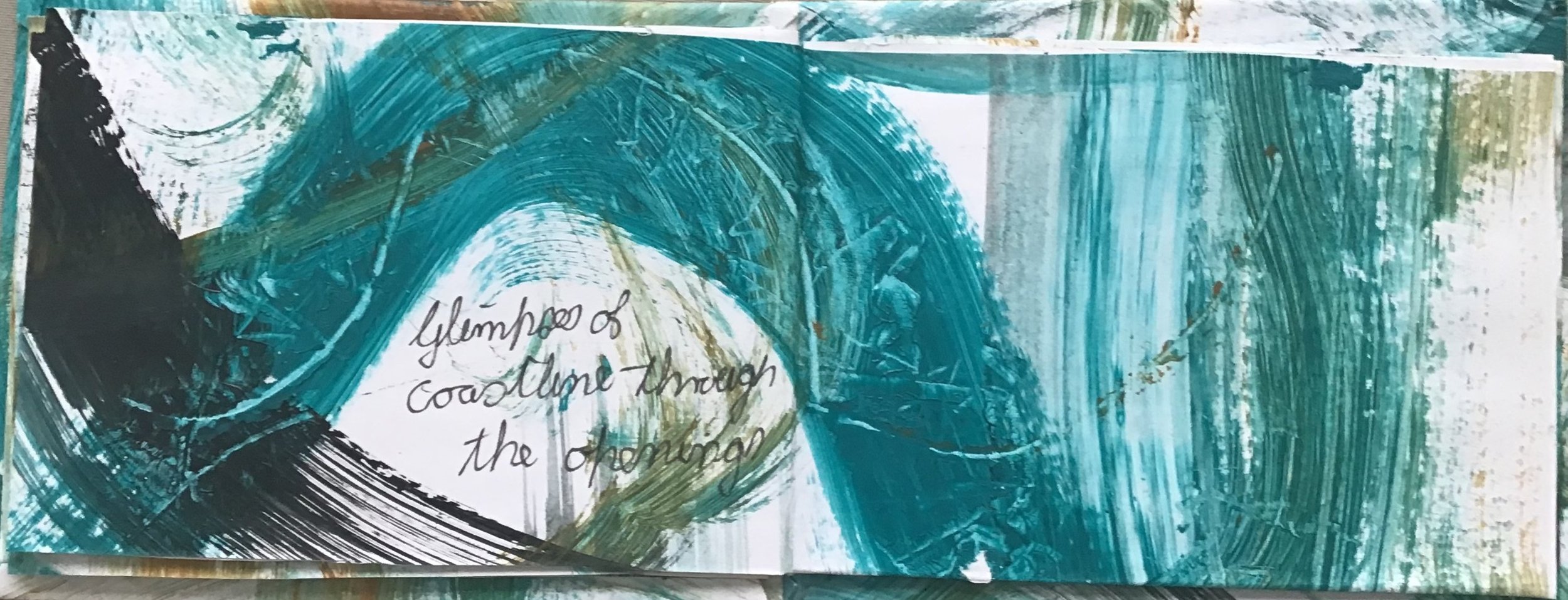
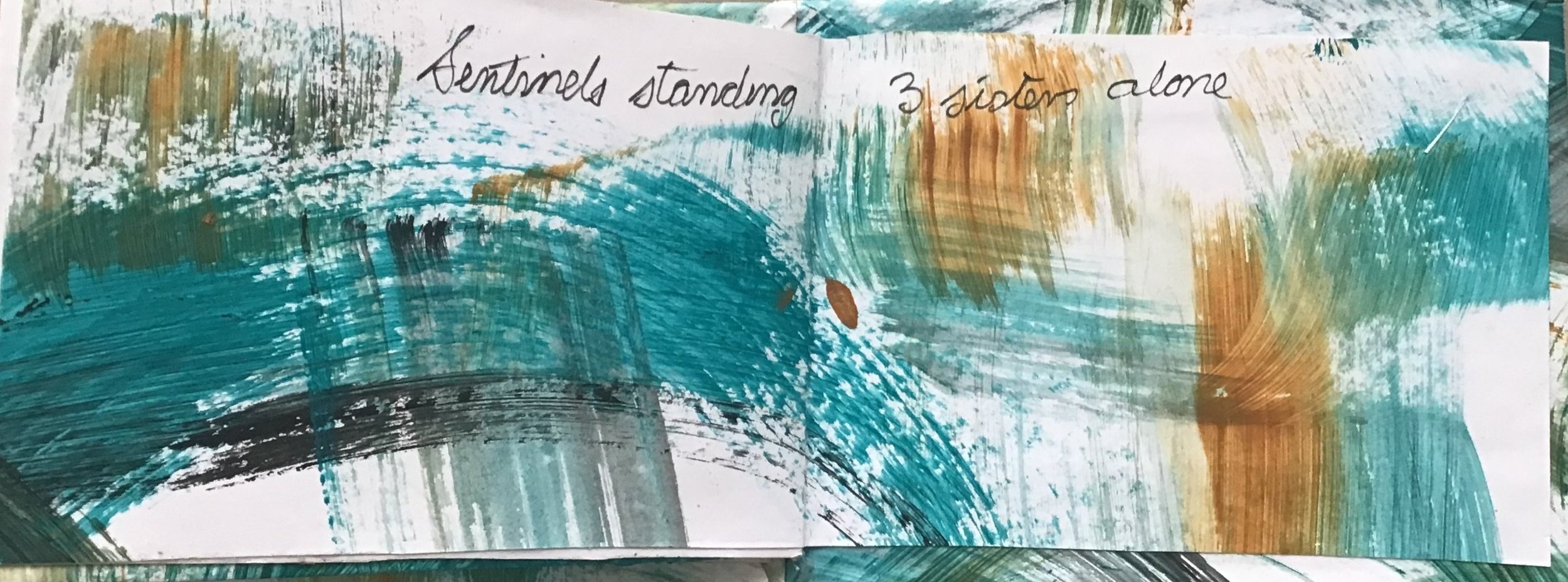
I chose turquoise burnt umber and black to paint two A3 pieces of paper using various mark making methods. Once the paint was dry, I folded the paper in half long wise and pressed with a bone folder. Then I folded each subsequent side into this middle fold and pressed with a bone folder.
I folded the short (portrait) sides of the paper in the same way. The result is 8 segments. Decide on whether your book is to be a portrait or landscape book (mine is landscape) carefully cut up the two outer folded lines through 2 segments. On the middle fold cut down in the opposite direction two folds.
The sections can now be folded up and down to create a pile of the folds. This is the part I had always missed. The blank top and bottom sections will be glued onto the covers. Open out and mark the rest of the blank sections 1 and 2 so you can identify which ones need to be glued together. Glue those blank sections (a 1 to a 2) down so the book now only opens as a traditional book.
Measure and cut two pieces of cardboard slightly larger than the book for the covers. Cut two pieces of paper 1.5 cm wider all round than the cardboard. Glue the cardboard and place in the centre of the papers. Press well with a bone folder. Trim off the edges at 45° close to but not right up to the corners of the card. Fold down and glue opposites ends of the covers. Pinch in at the corners to create tidy corners that do not have dog’s ears. Glue the inside of the cardboard to the blank front and back of the caterpillar book. Press under a weight over night.
These are delightful little journals that can be used for any number of recording ideas. In this case I have recorded my walk to the Three Sisters, but I am very tempted to make one for sitting in my garden, listening to the cicadas at this time of year

What is my current Textile Focus
My interest in textile art is wide and varied. My focus at the moment is on completing panels for my scholarship project Parallels in Maori and Celtic customs and art. I am currently working on a Tromp L’oeil piece that represents the Winter solstice coming through a gap in the hills that was important to both cultures in mapping their seasonal world. the centre piece is hand embroidered and now I am trying to complete the effect of adding small pieces fabrics to create the effect I am looking for



